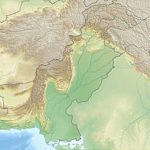 RAWALPINDI, Jan 19: The Potohar region is rapidly losing its unique characteristic of being a habitat to spectacular wildlife species due to rampant poaching, with the authorities concerned doing nothing to protect the fauna from human greed. The Rawalpindi division is rich in both flora and fauna and is home to a magnificent variety of wildlife like kaleej, partridge, pheasants, blandford urial, rabbits, black and grey partridges, barking deers and migratory birds like mallards, teals, ruddy shelduck (Surkhab) and snipes etc. According to the wildlife department, hunting season in the area starts from November 15 and continues till January 31 but illegal hunters and poachers come to the field before the start of the hunting activity even in the protected areas.
RAWALPINDI, Jan 19: The Potohar region is rapidly losing its unique characteristic of being a habitat to spectacular wildlife species due to rampant poaching, with the authorities concerned doing nothing to protect the fauna from human greed. The Rawalpindi division is rich in both flora and fauna and is home to a magnificent variety of wildlife like kaleej, partridge, pheasants, blandford urial, rabbits, black and grey partridges, barking deers and migratory birds like mallards, teals, ruddy shelduck (Surkhab) and snipes etc. According to the wildlife department, hunting season in the area starts from November 15 and continues till January 31 but illegal hunters and poachers come to the field before the start of the hunting activity even in the protected areas.
This year, only tehsil Gujar Khan has been opened for hunting but poachers and unauthorised hunters have penetrated into the restricted areas of Kallar Kahar, Talagang, Kalar Syedan, Murree, Kahuta and Pindigheb.
In these areas, even the local residents shoot the birds, particularly black and grey partridges, at night when they come to roost in trees in groups of 10 to 15. The hunters use 12-gauge short guns, nets, 7mm and .308 calibre rifles for shooting the birds and use heavy and sophisticated guns for hunting animals. Illegal hunters are in the field for shooting the birds and animals for meat, collection or for commercial purposes.
The wildlife authorities issue licence to hunters for Rs2,000 per annum and this month it has issued 223 licences in Rawalpindi despite the fact that the activity is allowed only in Gujar Khan. Kaleej that has been declared as the extinct species of pheasants by World Wildlife Fund (WWF) and International Union for Conservation of Nature (IUCN) is also being hunted in the region along with blandford urial in Jhelum area. The wildlife authorities in Rawalpindi have only 19 watchers and three inspectors to look after an area spreading over 5,200 square miles without any transportation facility. The office had been allocated only Rs30,000 as petrol allowance and Rs20,000 for repair of the only official vehicle under the use of the district officer wildlife, which at present, however, remains unutilised for want of repair.
The extent of the illegal hunting of species can be judged from the fact that the department has issued 227 challans out of which 104 cases have been decided by courts fetching Rs1.3 million. Moosa Javed, a hunter, told Dawn that poachers were using dogs and sophisticated weapons for hunting besides attacking the eggs of birds, regretting that the number of wildlife was dwindling alarmingly. Hunters from all over the country kill grey and black partridges in the region as the season has commenced and will end in March. “But we hardly find two or three partridges a day,†Waheed Khattak, a hunter who came from D. I. Khan, told this reporter. Interestingly, the hunters are allowed to hunt on Sunday or gazetted holidays but they have taken refuge permanently hunting quills, ruddy shelduck and other animals with impunity.
The wildlife is not only threatened by illegal hunting but also by illegal construction activities that have diminished wetlands. Many protected areas in Murree and Loi Bher have been swamped by private housing societies.A wildlife official who wished not to be named told this reporter that illegal hunting and construction activities coupled with lack of resources had alarmingly affected the flora and fauna of the area.